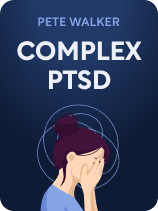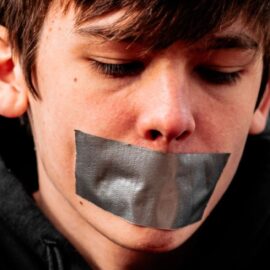

This article is an excerpt from the Shortform book guide to "Complex PTSD" by Pete Walker. Shortform has the world's best summaries and analyses of books you should be reading.
Like this article? Sign up for a free trial here.
How are shame and abuse linked? Can you learn how to deal with shame?
Shame and abuse are tied together because victims of abuse often feel shame which contributes to the belief that they deserve the abuse. When someone feels this way and feels they deserve the abuse, it becomes much harder for them to leave the situation.
Learn more about where shame originates and how to deal with it.
Understanding Perfectionism and Virulent Shame From Abuse
Shame and abuse are closely linked. Much of the psychological damage of CPTSD comes from victim-blaming, which leads the victim to think they’re being rightfully punished rather than unfairly abused. For example, an abusive spouse might scream and berate their partner on a daily basis, but always with some excuse—like the partner didn’t do a chore well enough, was late getting home, or said something in the wrong tone of voice. How to deal with shame is to address these influences.
(Shortform note: This manipulative tactic is often referred to as DARVO—Deny, Attack, Reverse Victim and Offender. When confronted about their abuse, the abuser first denies that they’ve done anything wrong. Then they become angry and aggressive, attacking their victim’s judgment, memory, integrity, or motives to make the victim’s story seem like an unfounded attack on the abuser. All of this is an attempt to reverse victim and offender; to make it look like the victim is the real problem and the abuser is the one who’s suffering.)
In such cases, the victim will try to stop the abuse through perfectionism and harsh self-criticism. They think that if they stop making mistakes, or become “good enough” (whatever that might mean), then they won’t be punished anymore. However, because the abuse was never really about that person’s behavior or performance, this strategy is doomed to fail.
(Shortform note: Since abuse isn’t actually about the victim’s behavior or performance, what is it about? In Why Does He Do That?, counselor Lundy Bancroft says the answer is actually very simple: People are abusive because it benefits them. According to Bancroft, abusers value their own comfort and convenience over others’ physical and emotional well-being, so they use humiliation, threats, and violence to get what they want at any cost.)
That failure often pushes the survivor even further into self-blame. When their best efforts still can’t make them “good enough,” they begin to suffer from virulent shame: a deep-seated belief that they’re fatally flawed as a person and therefore can never be “good enough.” Those thought patterns can persist long after the survivor leaves the abusive situation—in some cases, for the rest of their life.
(Shortform note: In Atlas of the Heart, social worker and self-help author Brené Brown says that shame makes us want to hide ourselves—and especially whatever we’re ashamed of—from other people. For instance, someone who’s ashamed of being an alcoholic will do whatever they can to hide their drinking from others. Brown also says that the remedy for shame is to do the exact opposite: to talk about the thing they’re ashamed of with family or close friends, so they can receive love, empathy, and support as they work through their problems.)
Placing Blame Where It Belongs
Because victim-blaming causes so much harm to the survivor, psychological recovery begins with the survivor learning to place the blame for their trauma where it belongs: on their abusers. Doing so helps them start to break out of the habit of blaming and shaming themselves.
While the recovery process for people with CPTSD often begins with learning to assign blame for their past traumas specifically, appropriately placing blame is a crucial skill that they’ll need to continue to practice throughout their lives. Survivors who don’t learn this skill might spend their whole lives reenacting the abuse they suffered: They’ll berate and criticize themselves for anything that’s less than perfect, regardless of how important it is or whether it’s even their fault. Anything from their physical appearance to minor mistakes can trigger a survivor into self-blame and virulent shame.
| The Difference Between Blame and Responsibility Mark Manson’s book The Subtle Art of Not Giving a F*ck has several helpful insights on the subject of blame. First, Manson says that many people confuse blame with responsibility. Therefore, they believe that blaming their problems on someone else, even if that person deserves the blame, is the same as refusing to take responsibility for their own situation. Second, Manson says that accepting responsibility makes people feel empowered and in control. Based on these two points, we can see that for someone with CPTSD—who may already be struggling to regain control of their life—placing blame where it belongs could feel like giving up what little control they have. However, Manson emphasizes that blame is not the same thing as responsibility: No matter whose fault a situation is, it’s up to each individual person to decide how they’ll deal with it. This means that someone with CPTSD can accept that someone else is to blame for their trauma, while still taking responsibility for their own recovery. |

———End of Preview———
Like what you just read? Read the rest of the world's best book summary and analysis of Pete Walker's "Complex PTSD" at Shortform.
Here's what you'll find in our full Complex PTSD summary:
- A guide to recognizing Complex Post-Traumatic Stress Disorder
- How to recover using physical, psychological, emotional, and social healing
- Why it's so important to accept and appreciate things that are "good enough"






